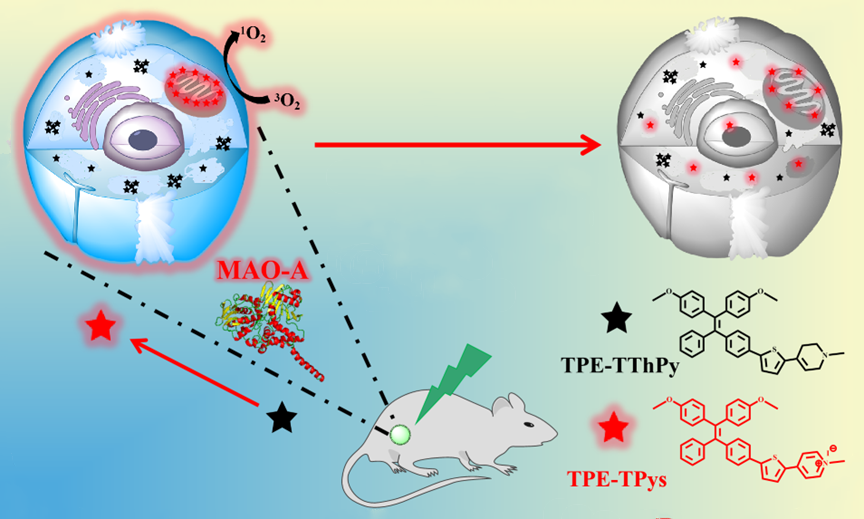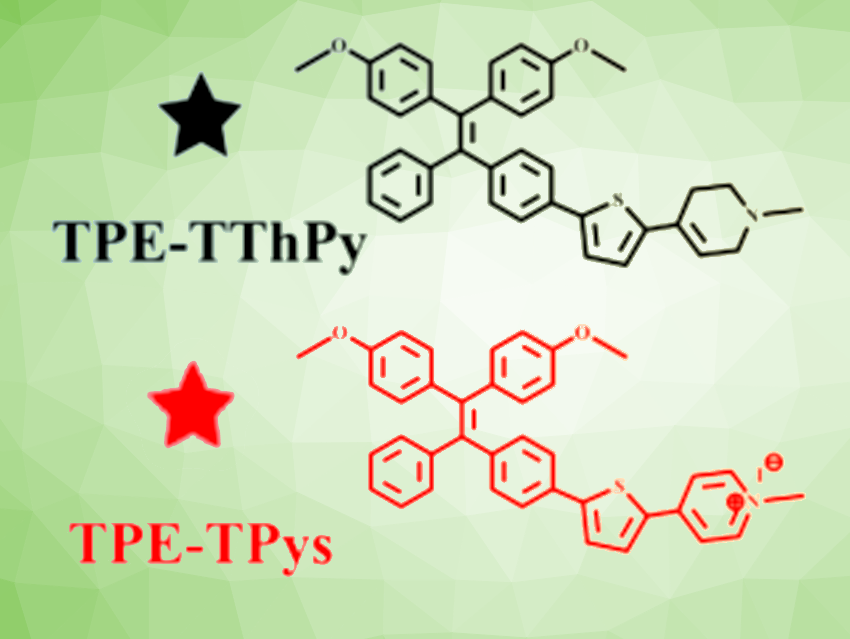New and efficient photosensitizers for photodynamic therapy (PDT) can be helpful in cancer treatments. PDT requires a combination of photosensitizers, light, and oxygen to produce reactive oxygen species (ROS), which can cause cell death. However, because of aggregation-induced quenching (ACQ), traditional photosensitizers often have a low ROS production efficiency and weakened fluorescence, which is not well-suited to PDT. They are also always in the “on” state and generally lack targeted activation at a tumor site. New photosensitizers with higher photosensitivity and a target-specific response could, thus, be useful for tumor imaging and PDT.
Jishan Li, Hunan University, Changsha, China, and colleagues have designed an aggregation-induced emission (AIE) photosensitizer (TPE-TThPy, pictured) that is activated by the tumor biomarker MAO-A for the highly specific imaging and treatment of tumors. AIE-type photosensitizers can exhibit greatly enhanced photosensitivity in the aggregated state. Monoamine oxidases (MAOs) are enzymes with two known forms in humans (MAO-A and MAO-B). MAO-A is overexpressed, e.g., in cancerous tissues. TPE-TThPy consists of a tetraphenylethylene (TPE) unit, which is used as the electron donor, a thiophene linker as a π-bridge, and tetrahydropyridine (ThPy), which can be converted to methylpyridine salts, as the electron acceptor.

In the presence of MAO-A, TPE-TThPy can be converted into TPE-TPys (pictured in red), which “turns on” the photosensitivity. The team observed high specificity of this effect in MAO-A-overexpressing tumor models, which could make the new photosensitizer useful for specific imaging and therapy.
- Rationally designed monoamine oxidase A‐activatable AIE molecular photosensitizer for the specific imaging and cellular therapy of tumors,
Yingcai Hu, Sheng‐Yan Yin, Wei Liu, Zuhao Li, Yun Chen, Jishan Li,
Aggregate 2022.
https://doi.org/10.1002/agt2.256




